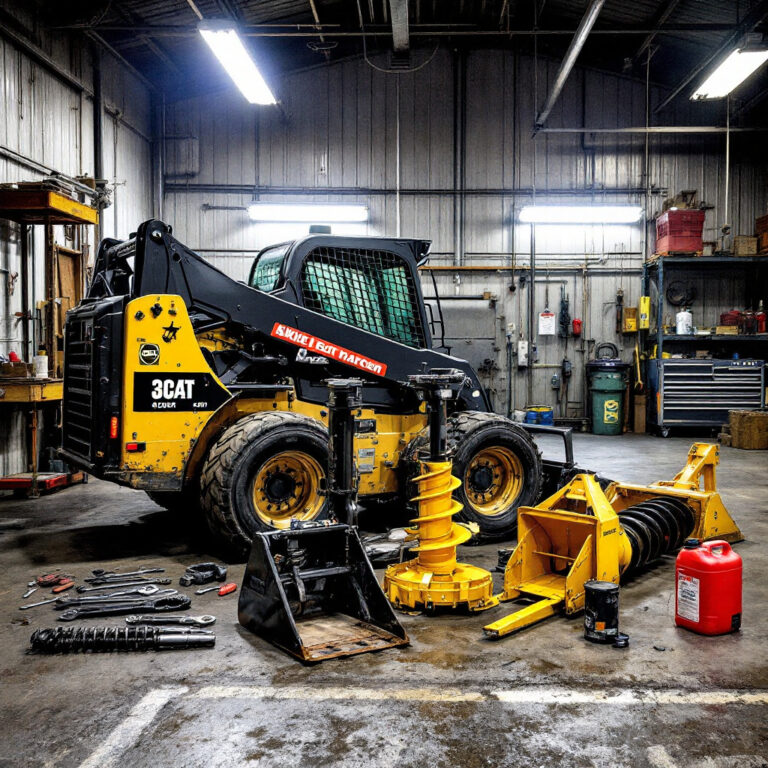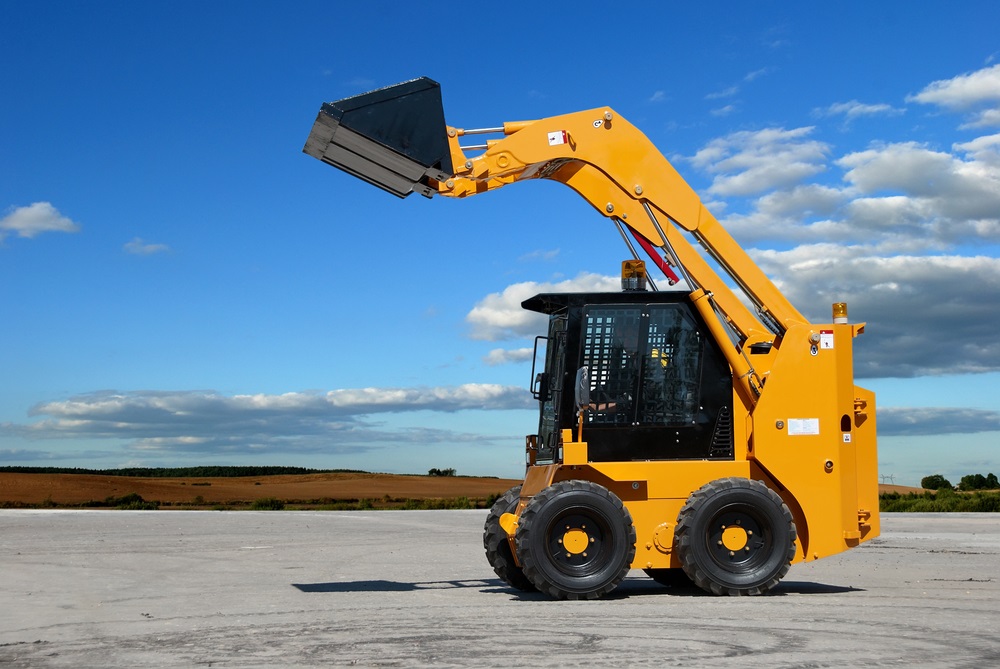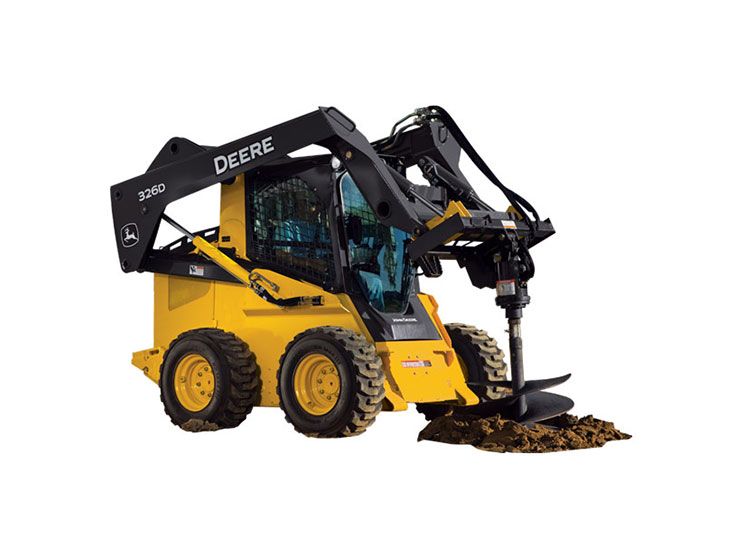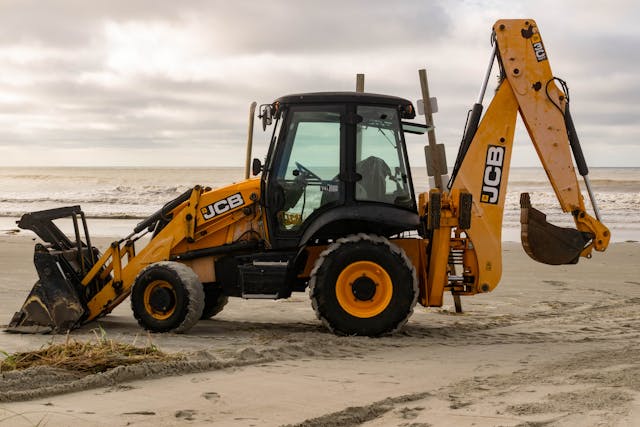Choosing the right fork size for your skid steer loader: how to get perfect fit?
Finding the Perfect Fit: How to Determine the Right Fork Size for Your Skid Steer Loader
Mostly dependent on the accessories they employ, skid steer loaders are adaptable tools. For pallet transportation, material handling, and many other tasks especially crucial are forks.
Conversely, selecting the wrong fork size might cause inefficiencies, hazards to safety, and sometimes damage of materials or equipment. This comprehensive guide will enable you to choose the ideal fork size for your skid steer loader, therefore ensuring both performance and safety.
Understanding the need of suitable fork size
Choosing a fork size goes beyond simple pallet width matching. It means juggling many factors directly affecting your production and safety. Although too short forks may create instability and problems lifting weights, too long forks may make maneuvering in limited locations difficult and increase the risk of accidents difficult. Correct fork size provides safe, cheap, and efficient running performance of your skid steer loader.
Factors affecting the choice of Skid Steer Forks
Several factors should direct your fork selection for your skid steer loader:
Fork Length:
- The fork’s length should be proportional with the weights you regularly handle.
- Longer forks provide more support for large loads even if they could restrict movement in limited spaces.
- Standard fork lengths range from 36 to 72 inches; most commonly used forks are 42– and 48–inch ones.
Should the fork be too short, the load may become unstable and run the risk of falling over; should the fork be too long, it may reach beyond the pallet or material, therefore rendering inefficient handling.
Fork Width:
- A fork width determines how equally the weight is distributed across the load.
- Standard forks go in width from 4 to 6 inches; larger forks provide more stability for large and heavy things.
- Smaller, more compact loads requiring precision from which thin forks are required.
- Without having several fork sets, adjustable forks enable one be flexible and suited for different load weights.
Fork Thickness and Capacity Rating
- The thickness of the forks determines their weight-bearing capacity, thus determines their strength as well.
- Usually 1.5 inches thick, lighter forks might manage a fair weight up to 2,500 lbs.
- About 2.5 inches thick, heavy-duty prongs fit industrial and construction applications and can resist up to 10,000 lbs.
- Always check the rated capacity of your skid steer to ensure the forks can properly control the intended weight.
Material Type:
- The kind of materials you deal with will determine the type and size of forks you need.
- Palletized loads need for forks that fit traditional pallet slots without damage.
- For stability, logs, pipelines, and uneven materials, stronger, more wide forks may be needed.
- Concrete blocks and other heavy construction materials need for thick, higher capacity prongs.
Compatibility of Skid Steer Loaders
- Check compatibility as not all forks fit every skid steer model.
- Simple fork removal and installation help to increase operational efficiency via speedy attachment.
- Consider hydraulic fork location for quick free from human intervention width adjustments.
- Make sure the forks align with the lifting and tilt characteristics of your skid steer for maximum performance.
Key Variables Affecting Fork Size
Many rather crucial factors determine the appropriate fork size for your skid steer loader. These include the kind of materials you handle, the weight and dimensions of your loads, the working circumstances, and the loader’s characteristics.
- Load Weight and Dimensions: First of relevance are the weight and size typically handled of the materials. Havier loads necessitate longer and thicker forks to evenly distribute the weight and prevent bending or fracture. Longer forks may also be necessary for more dispersed loads to provide enough stability and support. Analyzing the typical load weights and sizes enables one to choose a fork competent of controlling the predicted maximum load.
- Pallet Size and Type: Type of pallet you choose might influence the required fork length; common pallet sizes vary. For example, standard North American pallets often run 48 inches long, hence forks at least that length are required. Still, if you handle unusual or larger pallets on a regular basis, your fork will vary.
- Working environment: The surroundings you operate your skid steer loader in determine the appropriate fork size in great part. Tight locations, uneven terrain, indoor or outdoor surroundings influence the mobility and stability of your equipment. Shorter forks would be preferable for confined areas’ movement ease, even if longer forks may be needed for reaching into deep storage areas or handling objects on uneven ground.
- Specifications for Slid Steer Loaders: Important considerations include basic dimensions, lifting capacity, and operating weight of your skid steer loader. Make sure the selected forks meet your loader’s specifications and that the weight of the load carried overall does not beyond the loader’s specified capacity. It is very essential to consult the operator manual of your loader for recommended connection instructions.
- Application and Task: The specific operations you conduct with your skid steer loader will also influence the fork you decide upon. Longer forks might be needed, for example, if you handle heavy or lengthy materials often. If pallets are mostly moved within a warehouse, standard-length forks would be adequate. Consider the range of work you conduct and choose forks to handle the most demanding applications.
- Fork Thickness and Width: Fork width and thickness absolutely determine load-bearing capacity and durability. Less prone to bending or breaking, thicker and more widely spread forks can handle greater weight. Select forks whose weight and kind of work call for their width and thickness.
Comprehensive Guide on Measurement and Selection of Forks
These rules will help you exactly choose the required fork size:
- Measure Your Pallets: Usually utilized here are the width and length of the pallet. Although there are variations, ordinary pallets typically run 48 inches in length.
- Find your load measurements: Track the height, width, and length of the items you handle. Consider the largest dimensions you could run across.
- Calculate the suitable fork length: your forks should preferably reach at least two-thirds of the load length. Your forks should be at least 32-inch long on standard pallets. Longer loads, however, might call for longer forks.
- Consider Load Center: The load center is the difference between the front face of the forks and the central of gravity of the load. A shorter load center enables greater lifting capabilities feasible whereas a longer load center reduces capacity. Your forks should be long enough to fairly support the weight at its center of gravity.
- Evaluate Your Operating Environment: Look over your operating surroundings. Review the region you drive your skid steer loader over. Tight spaces might need shorter forks for more maneuverability.
- Check Your Skid Steer Loader Specifications: Review your skid steer loader specs. See your operator’s manual for recommended fork sizes and weight capacities. Verify that your loader matches the selected forks.
- Consider Fork Class: Rising system and load capacity determine the fork class utilized. Check that the forks you choose match the skid steer loader’s carriage.
- Evaluate Fork Thickness and Width: Select forks appropriate in thickness and width for the weight and kind of materials you handle. Thicker and broader forks provide more strength and durability.
Standard Fork Dimensions and Applications
Skid steer loader forks range in size to fit many uses. Typical fork diameters include of:
- 36-inch Forks: Perfect for handling smaller pallets or products in limited areas and light-duty jobs.
- 42-inch Forks: Perfect for light construction, pallet movement, and overall material handling.
- 48-inch Forks: Designed for most general-purpose uses and regular pallet handling.
- 60-inch Forks: Ideal for managing longer or bigger goods, including pipes or logs.
- 72-inch Forks and Longer: Designed for heavy-duty uses for handling very lengthy or bulky materials, 72-inch Forks and Longer
Guide for a Safe Fork Operation
Just utilizing the correct fork size is one component of safe skid steer loader operation. Check forks often using these additional safety tips to prevent mistakes and injury.
- Inspect Forks Regularly: Before every usage, check your forks for any damage—such as wear or cracks or bends. Change broken forks immediately away.
- Ensure Proper Fork Mounting: Check that the forks are securely attached to the carriage and the locking pins are engaged.
- Maintain Proper Load Balance: Maintaining good load balance, evenly divide the weight across the forks to prevent tipping or instability.
- Control your skid steer loader: The forks never overrun their rated lifting capacity.
- Use Proper Lifting Techniques: Using suitable lifting methods, slowly raise and lower objects to avoid sudden movements.
- Aware of your surroundings: Keep a good view of your surroundings and be aware of barriers or pedestrians.
- Use a Spotter When Necessary: As advised when handling large or heavy objects, use a spotter as necessary to insure safety.
Wear Appropriate Safety Gear: Always check appropriate safety gear, including a hard helmet, safety glasses, and steel-toed boots, correct operators’ training.
Every operator should be well informed on the safe operating of fork attachments and skid steer loaders.
Final Summary
Selecting the right size forks for your skid steer loader calls for understanding of load demands, operating environment, and skid steer compatibility. By choosing the correct weight capacity, length, and width, one may optimize production, lower equipment damage, and improve workplace safety. More especially, regular inspections and adherence to safety guidelines assist to ensure optimal performance. Correct skid steer fork investments will help you operate with better output and sustainability.
By attentively assessing these components and following the guidance in this article, you will be able to choose the optimal fork size for your skid steer loader, therefore ensuring greatest performance, safety, and efficiency. Always give safety first concern; for further guidance, see the manual provided by your operator.

